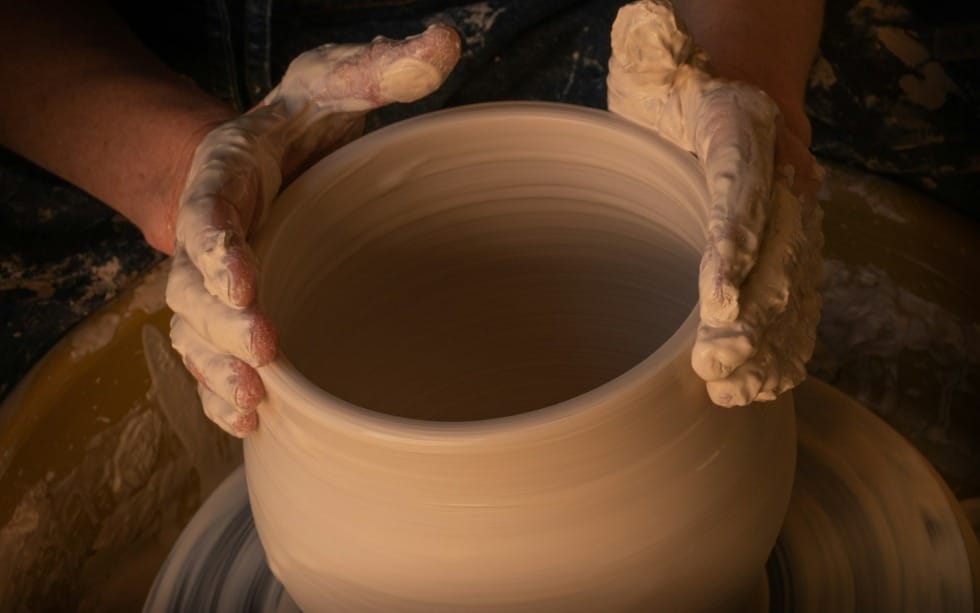How Our Life is Like Clay (Jeremiah 18-29)
Do you struggle with shaping your own life? Jeremiah reminds us that real peace comes when we let God form us instead of forcing our own way.

Jeremiah 18-29
Today's Scripture Passage
A Few Thoughts to Consider
Do you struggle with shaping your own life?
If you’re like many Christians, especially in America, you like the idea of creating your own destiny. In subtle ways, maybe you’ve bought into the lie that you need to make a name for yourself, achieve something significant, or leave a legacy where others will remember your name. If you feel this pressure, Jeremiah 18 is a wonderful passage to meditate on.
It’s here we see this well-known illustration of the potter and the clay. Remember that this occurs during the late 7th and early 6th centuries BCE, a turbulent period for the Kingdom of Judah. This was a time of political instability, marked by the Assyrian Empire's decline and the Babylonian Empire's rise under Nebuchadnezzar II. Socially and religiously, Judah was plagued by idolatry, corruption, and moral decay, leading to repeated warnings from prophets like Jeremiah. It’s under this mess we read these words in Jeremiah 18:1-2:
1 This is the word that came to Jeremiah from the Lord: 2 “Go down at once to the potter’s house; there I will reveal my words to you.” 3 So I went down to the potter’s house, and there he was, working away at the wheel. 4 But the jar that he was making from the clay became flawed in the potter’s hand, so he made it into another jar, as it seemed right for him to do.
A few points to note. As F. B. Huey Jr. writes, “The command to go down to the potter’s house suggests that Jeremiah was to go to a lower part of the city, probably to the Valley of Hinnom.”[1] To understand the fuller setting, John Walton and Craig Keener offer this extended helpful commentary:
In the ancient Near East, handmade pottery was crafted as early as 8500 BC, which corresponds to the Neolithic period (c. 9000–4300 BC). Pottery is a valuable instrument in helping archaeologists date historical events as well as archaeological discoveries. The kind of clay, the shape, decoration, kinds of handles and colors are all used to develop a chronology and dating system. The potter’s house, or workshop, must have been a rather large place. It included various instruments as well as different areas of work. It had to have a potter’s wheel, a space for treading, a kiln, a field for storing vessels and a dump for those pieces the potter discarded. The potter also needed a good source of water, which could be either a nearby stream or cistern.[2]
Excavations done at places such as Tel Miqne-Ekron have turned up seventh-century BC wheels made out of stone. The potter’s wheel has been in existence since approximately the fourth millennium BC. In Jeremiah’s time there were two varieties: a slow wheel, or tournette, and a fast wheel. The one mentioned in this context is most likely the fast wheel. It consists of two disks or stones joined by a vertical axis. The lower one functions like a flywheel and is spun by the potter’s feet. (In Sirach 38:29 we read, “So it is with the potter, sitting at his work, turning the wheel with his feet” [NEB].) This causes the upper disk or stone to rotate as well. The clay is placed on the upper disk and is shaped by the hands of the potter.[3]
God goes on to tell Jeremiah in Verse 6 that, “Just like clay in the potter’s hand, so are you in my hand, house of Israel.” He has the power to raise up or tear down. Regardless of how “great” they are, everyone is just clay in the potter’s hands. The more moldable we are, the more we will become like Jesus and the more we will live in alignment with who we were created to be.





